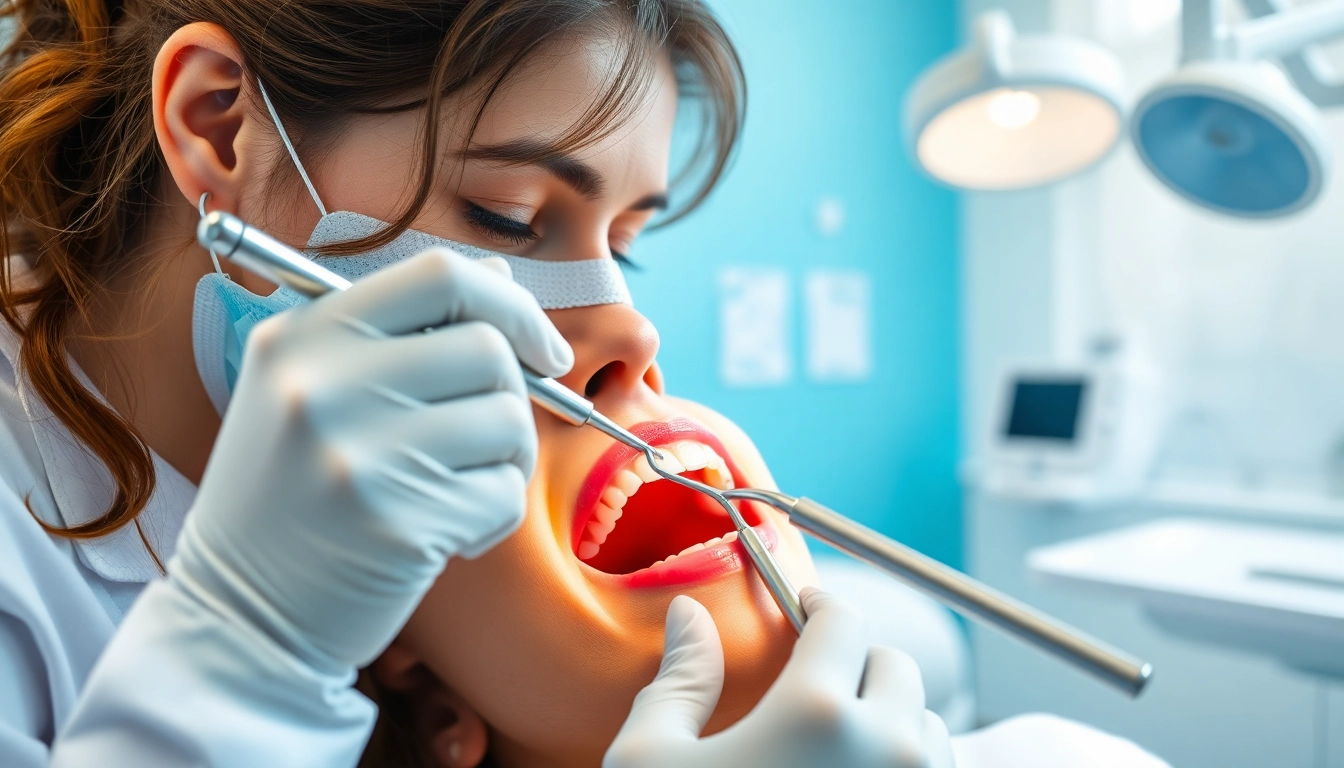What Are Dental Bridges?
Definition and Purpose of Bridges
Dental bridges are prosthetic devices used to replace missing teeth. They typically consist of two or more crowns for the teeth on either side of the gap and a false tooth (or teeth) in between. The primary purpose of a bridge is to restore both functionality and aesthetics to a person’s smile. Additionally, bridges help maintain facial structure, distribute bite forces properly, and prevent the remaining teeth from shifting out of alignment. For further information on the significance of dental bridges, consider exploring knowledgeable dental resources such as bridges related content.
Types of Dental Bridges
There are several types of dental bridges, each designed for different clinical situations:
- Crown and Bridge: This is the most common type, where crowns are placed on the adjacent teeth, with a false tooth anchored in between.
- Maryland Bridge: Also known as a resin-bonded bridge, it uses a framework of metal or porcelain that is bonded to the back of the adjacent teeth. This type preserves more tooth structure but may not be suitable for all locations in the mouth.
- Implant-Supported Bridge: This option involves dental implants instead of crowns on adjacent teeth. It’s ideal for cases where multiple teeth are missing and provides superior stability.
- Traditional Bridge: This includes replacing missing teeth in a row and is supported by crowns on adjacent teeth.
Benefits of Using Bridges
Dental bridges offer numerous benefits, such as:
- Restoration of Function: Bridges restore the ability to chew and speak properly, aiding in overall oral health.
- Aesthetic Improvement: They can significantly enhance the appearance of the smile, providing a natural look that closely mimics existing teeth.
- Teeth Alignment Maintenance: By filling the gap, bridges prevent other teeth from drifting into empty spaces, which can result in bite issues over time.
- Long-Lasting Results: With proper care, dental bridges can last many years, making them a cost-effective solution for tooth replacement.
Process of Getting Dental Bridges
Initial Consultation and Assessment
The journey to acquiring dental bridges begins with an initial consultation. During this visit, your dentist will conduct a comprehensive oral examination, including X-rays to assess the condition of your teeth and gums. This evaluation will help determine if you are a suitable candidate for bridges and will address any underlying oral health issues that may need attention beforehand.
Preparation for Bridge Placement
Once eligibility is confirmed, the preparation process involves adjusting the adjacent teeth. This means reshaping these teeth to accommodate the crowns that will hold the bridge in place. An impression of the mouth is also taken to fabricate the custom bridge with precision.
Procedure and Aftercare
The procedure for placing a dental bridge usually takes two visits. During the first appointment, the teeth are prepared, and a temporary bridge may be placed. On the subsequent visit, the permanent bridge is fitted, ensuring it aligns properly with your bite. After placement, patients should practice good oral hygiene habits, including regular brushing and flossing, as well as attending follow-up appointments to monitor the bridge’s status.
Care and Maintenance of Dental Bridges
Daily Care Tips
Maintaining dental bridges requires diligence to ensure their longevity. Here are some daily care tips:
- Brush your bridge and surrounding teeth at least twice daily. Use a soft-bristled toothbrush and fluoride toothpaste to gently clean the area.
- Floss daily to remove food particles and plaque buildup underneath the bridge. Consider using floss threaders or special cleaning devices designed for bridges.
- Use an antibacterial mouthwash to minimize bacteria and promote oral health.
Foods to Avoid
Certain foods can compromise the integrity of dental bridges. It is advisable to avoid:
- Sticky candies and chewing gum, which can dislodge the bridge.
- Hard nuts or ice that could fracture the false tooth or surrounding areas.
- Foods that are excessively crunchy or tough, which can stress the bridge.
Routine Check-ups Importance
Regular dental check-ups are crucial for maintaining dental bridges. These visits allow your dentist to monitor the bridge’s condition, check for any signs of wear or damage, and ensure the surrounding teeth remain healthy. Usually, it is recommended to visit your dentist every six months for professional cleaning and examination.
Candidates for Dental Bridges
Who Should Consider Bridges?
Dental bridges are suitable for individuals who have one or more missing teeth due to decay, injury, or other dental health issues. Ideal candidates should have healthy gums and sufficient bone density in the jaw to support the bridge or any additional dental therapy proposed, like implants.
Common Conditions Treated with Bridges
Some common conditions that may lead individuals to consider dental bridges include:
- Loss of teeth due to severe decay.
- Injury or trauma leading to tooth loss.
- Congenital absence of teeth.
- Dental infections necessitating tooth extraction.
How to Determine Eligibility
Eligibility for dental bridges is typically determined through a thorough dental exam. Your dentist will assess the health of adjacent teeth, gums, and jawbone. If gum disease or other oral issues are present, those conditions will need to be treated before proceeding with bridges.
Alternatives to Dental Bridges
Implants vs. Bridges
Dental implants are a popular alternative to bridges. Unlike bridges, which rely on adjacent teeth for support, implants involve surgically placing a titanium post into the jawbone to act as a root for a crown. While implants provide excellent stability and do not affect adjacent teeth, they often require a longer recovery time and are generally more expensive.
Removable Partial Dentures
Removable partial dentures are another alternative for replacing missing teeth. They are less invasive than fixed bridges and can be an appropriate short-term or long-term solution depending on the patient’s needs. Partial dentures can restore functionality and aesthetics but may require additional maintenance and ultimately lack the permanence of bridges or implants.
Pros and Cons of Alternatives
Choosing between dental bridges, implants, and dentures involves weighing various pros and cons:
- Dental Bridges: Pros include quicker placement and generally lower cost. However, they require the alteration of adjacent teeth.
- Dental Implants: Pros feature high stability without affecting other teeth and better long-term outcomes. Their cons include more extensive surgical procedures and higher costs.
- Removable Dentures: They are less invasive and easier to adjust but can be uncomfortable and may not provide as natural a look as bridges or implants.















Leave a Reply